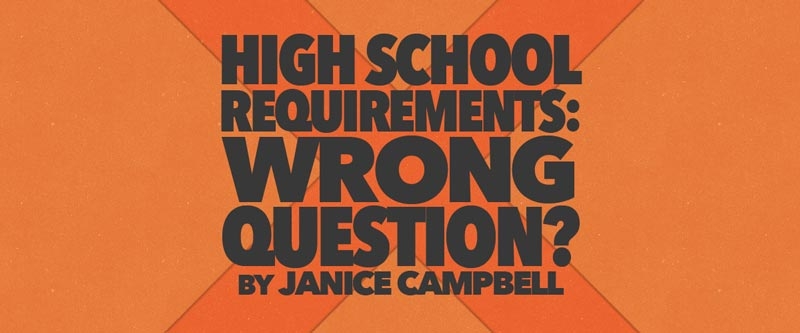As you consider whether or how to homeschool through high school, there are a few major questions that may crop up. One of the first questions I often hear is about “high school requirements.”
Parents wonder how many years of which subjects their student must take in order to graduate from high school, and that’s certainly an understandable question. However, there are reasons why it isn’t the most important question you need to ask.
One reason is that graduation standards have only minor variations across the country. You can find a printable page outlining basic requirements at my website (and more details in Transcripts Made Easy). As you work to decide on your high school curriculum, there are two questions that are far more important than the question of basic requirements. You need to ask:
- Who is my student, and what are his or her interests and goals?
- What are the admission requirements of the colleges or vocational training programs to which my student may want to be admitted?
These two questions will guide you in developing a curriculum plan that truly fits your student’s interests and goals. Traditional state high school requirements are usually minimal, and of little help in tailoring a program that makes the best use of your student’s time. The earlier you can answer the two questions above, the more focused and useful your curriculum will be.
For example, a student who has a math/science bent and hopes to go to MIT would have at least four years of math on his or her high school transcript, but it will most likely be a higher-level sequence than the three to four years of math on a prospective English or history major’s transcript. Both students would also have at least four years of English, but the student who hopes to attend a liberal arts school and become a journalist should have additional electives that contribute toward the well-rounded knowledge base needed in his future profession.
Most colleges and vocational schools list admission requirements on their websites, and this can be very helpful in curriculum planning. Even more helpful is the profile of the average student admitted to the school. If your student is dreaming of a university where the average incoming student has a 4.9 grade point average, a 2400 SAT score, and a transcript bristling with AP courses, it is obvious that he or she will have to far exceed the minimum requirements of the state in order to be considered for admission.
For students who don’t plan to go to college (a plan that often changes once they’ve been in the workforce for a few months!), it’s still important to cover the basics in a way that fits their interests and prepares them for the future. If they hope to work in a trade, their curriculum should contain not only courses that develop knowledge needed in the trade, but also the academic and business skills they’ll need to be successful. Most will eventually become parents, so family and life skills (the classes included in “home economics” when I was in school) are very important as well.
There is a lot more to planning a high school curriculum than just meeting basic requirements designed for a generic “average” student. You can help your teen create a high school curriculum that will develop their interests, make the most of their teen years, and truly prepare them for adulthood if you look beyond the basics.





